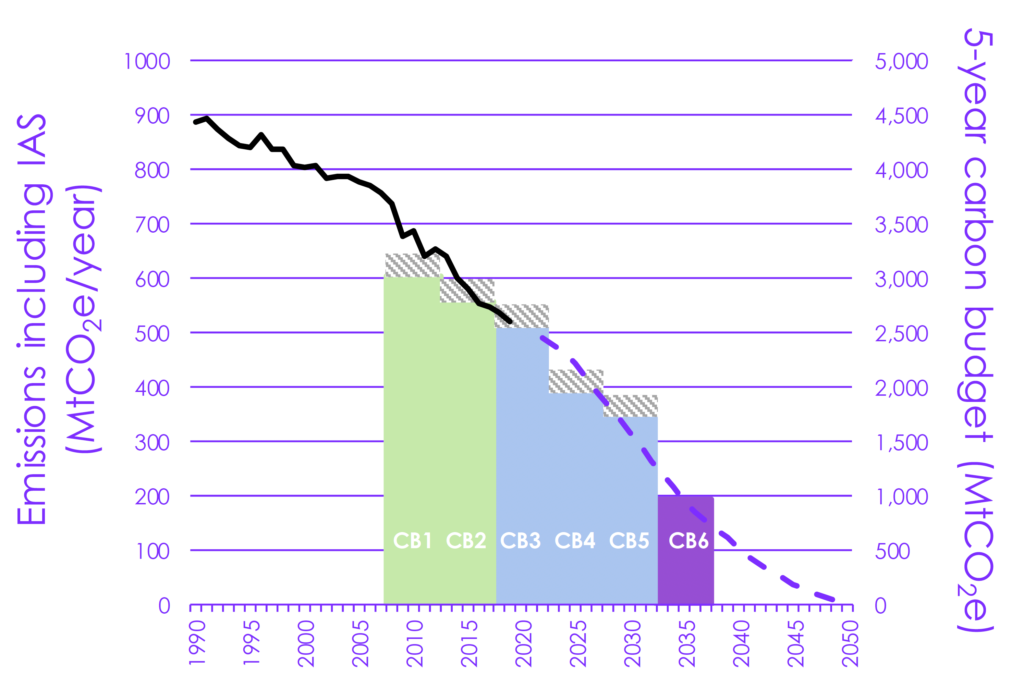Thursday 4th November 2021
During COP26’s Energy Day, Toby Heysham, MD of Pinnacle Power, explores the future of low carbon heat
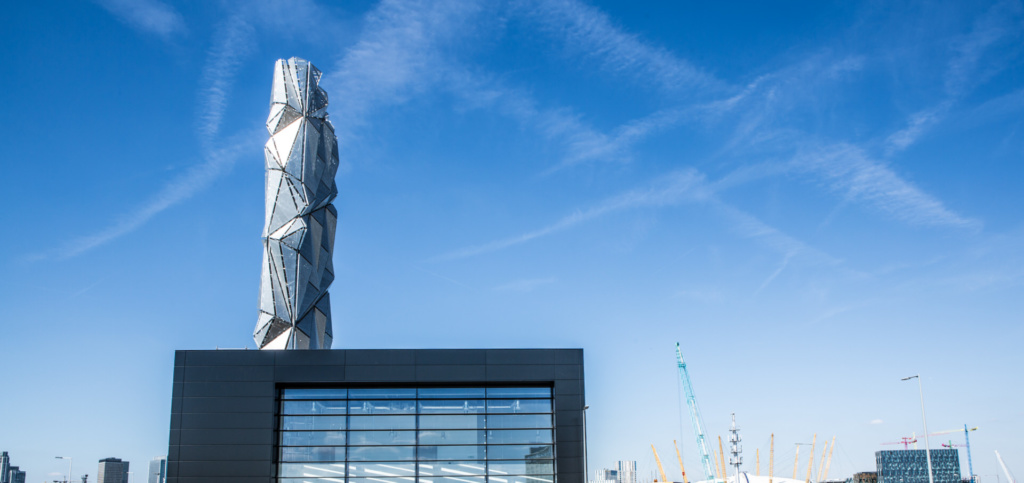
The world is watching the UN Climate Change Conference of the Parties (COP26) with excitement. What new commitments will arise? How will the world change as a result? It is really exciting to be working in Pinnacle Power as policy announcement after policy announcement comes out supporting the industry we are in, all at the same time as we are actively engaging with Government to speed things up. There is such intense pressure to not only deliver, but more so to deliver much faster. This gives me real confidence that the coming decade will be one of seismic shift for us as a country, but more so for anyone in the industries trying to deliver on this ambition.
The government is legally bound into its “Carbon Budgets” and has recently passed the 6th Carbon Budget into law. Looking at the graph beside, the firm line shows the carbon emission drop that has already happened. The dotted line is the pathway we need to be on in order to hit the legally binding targets. In very basic terms the drop you can see has come from the decarbonisation of the power sector (producing electricity). This has been achieved by turning off the coal fired power stations and the deployment of renewables.
This has been a huge success. It is very hard to argue with this success, but you can see from the graph how much further we need to go. The next “super challenges” that need to be faced are the decarbonisation of heat and transport. It is the heat bit that Pinnacle Power focuses on.
To hit these targets, we cannot continue to burn fossil fuels in our houses/ businesses anymore. This is a point often missed when we consider our own carbon footprint. Most of us have a supply of fossil fuel running into our homes, where we burn that fuel (typically gas or oil) to create heating. This not only emits carbon, but it has a terrible impact on air pollution. A friend of mine went to the doctor recently with her 2 year old son who was coughing up black gunk, the doctor looked at it and said “oh don’t worry that is just London Lung”. She was as horrified by the acceptance of this concept as the fact that it existed.
There is a huge amount of heat wasted in the UK every day. It is widely believed that 100% of the UK heat demand could be met by the heat we waste. Use a power station as an example, those cooling towers are doing exactly that… taking usable heat and cooling it down. Imagine if that could be turned into usable heat for your shower? You may have been on the tube network, imagine if that inferno could be turned into usable heat?
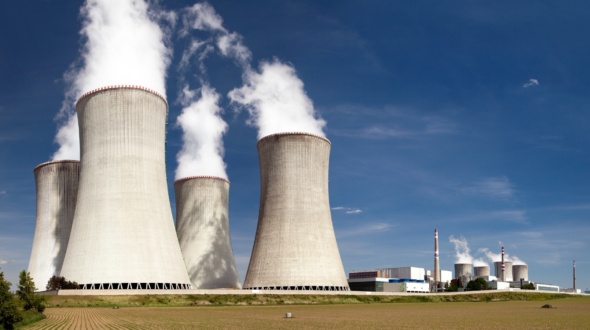
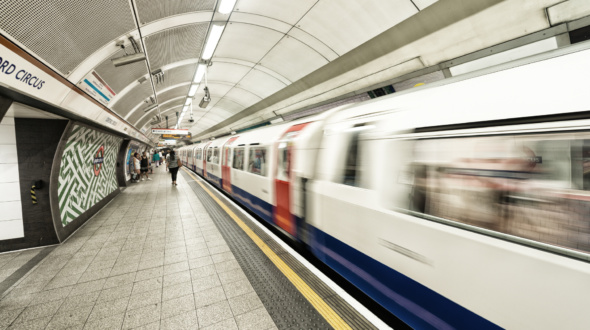
This is what Pinnacle Power does – we take heat from a variety of different low carbon/ waste sources and transport that through large pipes around a city, town, estate or community and then into peoples’ homes. Inside the house we then use our system to heat the customer’s property (hot water and heating). The interesting part of this is that we can, and will, change the source of that heat as time goes on. At the moment it may be one source, but in 5 years it will certainly be different, and probably in 10 years different again. We can run the lowest carbon, lowest cost heat into people’s homes.
The challenge here is for us to get the pipes running round the dense urban environments. As soon as the pipes are in we can then find waste heat, low carbon and cheap heat sources and plug them in. We then plug in the buildings, homes and businesses in the area and suddenly they are not burning gas or oil inside that building, there are no flues and both carbon performance and critically air quality improves. We start making significant progress on the fixed line of the Climate Change Committee graph.
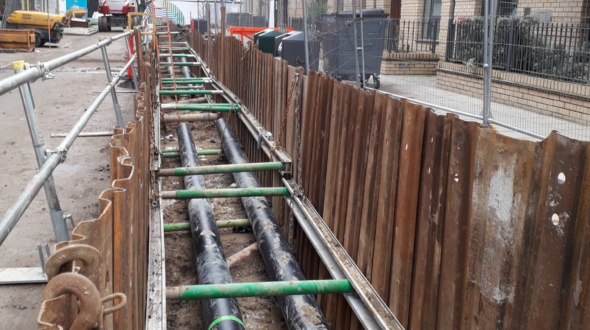
The final critical piece of the puzzle is the price of the heat. We cannot be in a world where we rely on the vast majority of consumers to change from high carbon to low carbon heating if the ongoing costs, or the initial costs, are high. Perversely this argument is being helped at present with the massive spike in the cost of fossil fuels. The main heating fuel in the UK is natural gas. This price has recently gone through the roof rising c300-500%. This is not yet fully being felt in the domestic market, but it will feed through to retail prices over the coming year. The value of a heat network is that as soon as the infrastructure is in place it is relatively easy to plug in very low cost or zero cost heat. The challenge is getting the infrastructure in place to take advantage of that cheap low carbon heat.
To this end the government has released a consultation on zoning which looks to insert a “heat zone” into every appropriate urban environment. This will be taking advantage of the government looking to remove gas from the built environment. This is detailed in the Heat and Building Strategy. These two policy drivers will make a significant impact in the growth of low carbon heating, but they will not get to the targets that the government set out. As a result of this we are working with government to provide an investment framework which will bring more than £60bn into low carbon heat networks in the coming decades. By way of reference this would be double the size of the current UK’s offshore wind industry. This industry is widely seen to have been a massive success. We are one of the worlds foremost offshore wind countries and this industry is the benchmark by which many in the heat industry view the future.
This is a thrilling time to be in the low carbon industries and we are excited by the challenge ahead.

Toby Heysham
Managing Director, Pinnacle Power
